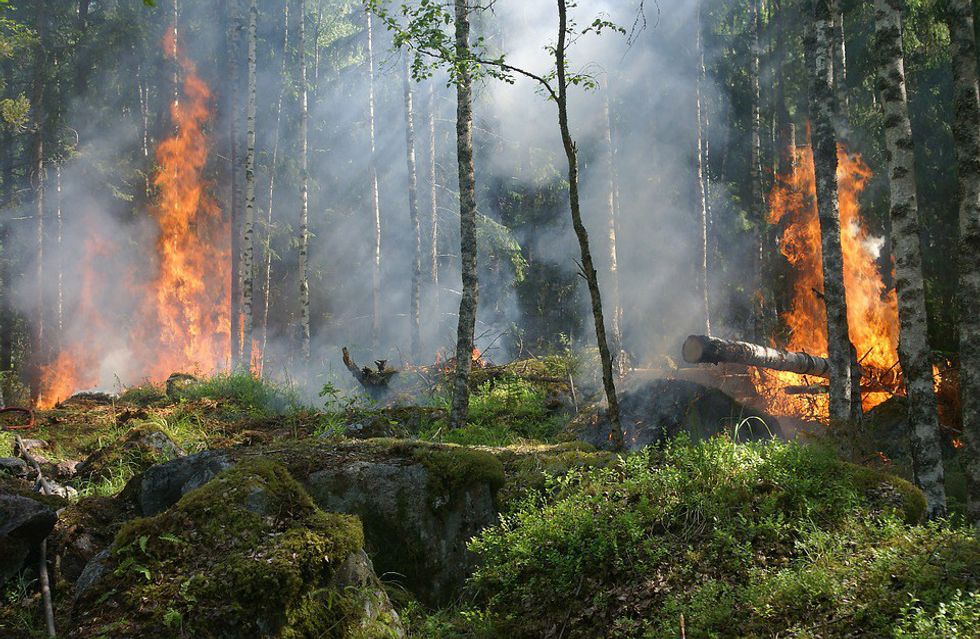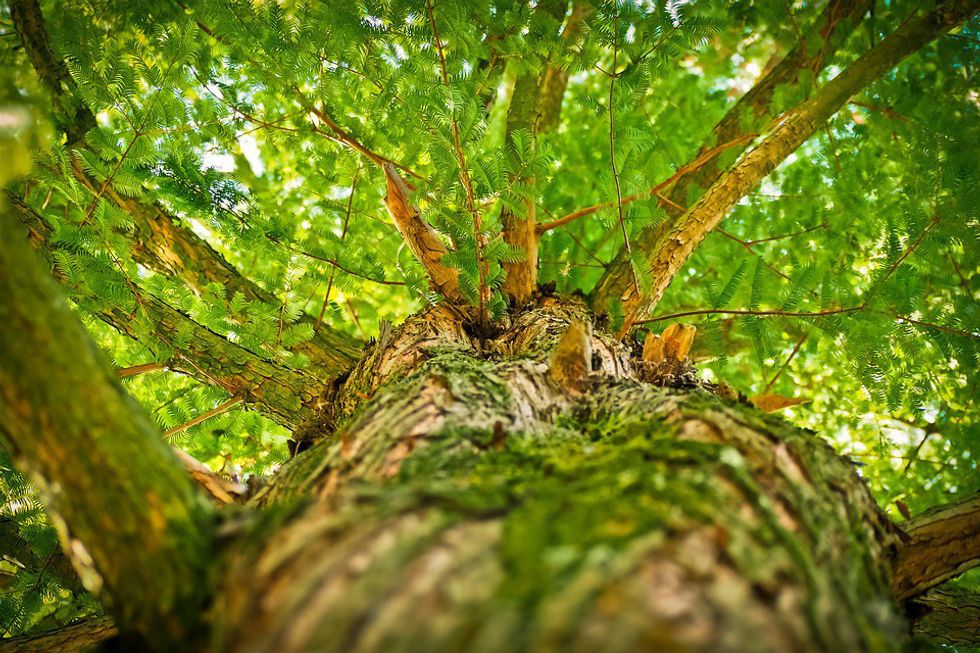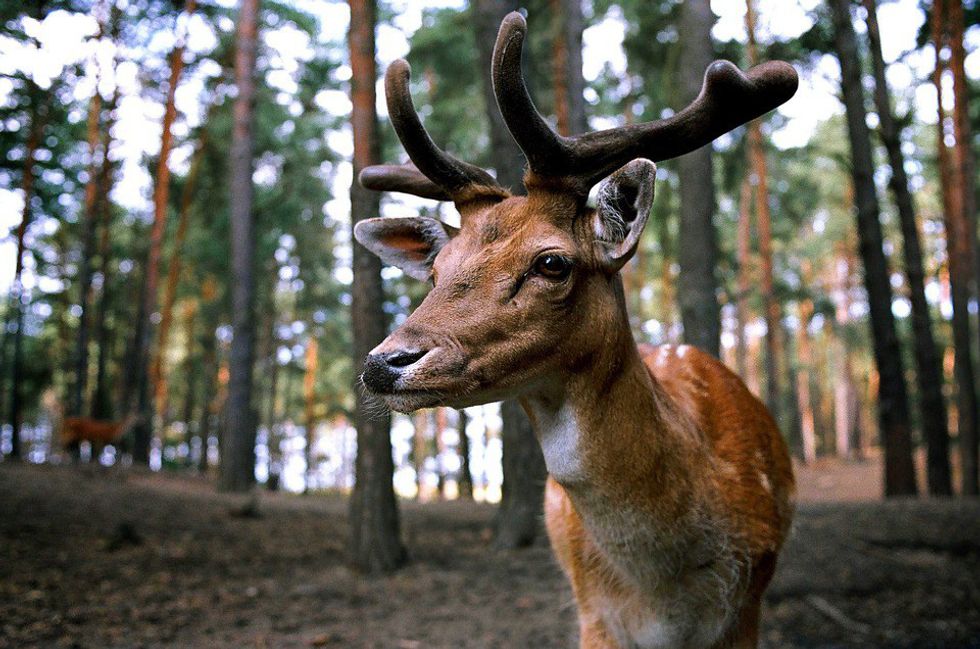From the ground up, sweltering flames start to reach around 3-feet-high– engulfing trees and shrubs that impede its path. Defiant flames loom to temperatures of 1,472 Fahrenheit as wind fuels the supremacy of blazes. At their most extreme, fires can tower over treetops and reaching temperatures around 2,192 Fahrenheit.
Fires have been perceived to be an unnerving force. From initial spark, they can become detrimental forces that spread like epidemics throughout ecosystems. As a result, humans have exerted control over fire regimes by interfering in a variety of ways – performing prescribed fire burns, suppressing wildfires and much more.
Whether fires are prescribed, suppressed or occur naturally, for many environments, the use of fire for various ecosystems is an essential mechanism.
Fire Ecology is a scientific discipline where fire-based methodologies are used in ecosystems because of the restorative and reproductive modality that fire has.
Mike Elson is the district ranger of the Coconino National Forest, Flagstaff Ranger District. Elson exemplifies the importance of fire for various ecosystems.
“Fire is a natural process within most forests in the United States and places throughout most of the world,” said Elson. “Fire plays a lot of important roles that helps to determine the nature of trees, the stand of trees, the density of the trees, and it also has a lot of ecosystem functions like nutrient cycling, it increases the nitrogen that is in the soil, allows for a lot of plants to grow that don’t grow otherwise and then by keeping the forest groomed it allows for more sunlight to reach the forest floors.”
Fire-based practices include controlled or suppressed fire burns, seritony – the demand by plant life for fire or heat to germinate – and many other fire-facilitated ecological methods.
Forests, prairies, savannas, chaparrals and coniferous forests – regions with warm summers, cool winters and sufficient rainfall – are some specific ecosystems that have evolved with fire, have native serotinous species in their regions or benefit form periodic fires to remain vigorous.
However, while many ecosystems and species of plant life possess fire-based characteristic, many animal species can face challenges in regards to fire adaption.
According to an article released by National Geographic, wildfires can lead to complications with survival, adaptation and forced migration patterns for many species.
Furthermore, according to National Geographic, wildfires have been linked to the endangerment of the Kirtland’s warbler – a bird species native in Michigan forest regions that are abundant with serotinous species, such as the jack pine – the tree that is the habitat to the Kirtland’s warbler species.
Kirtland’s warblers nest only on the ground near the lower branches of jack pines or in large stands of young jack pines that are between the ages 6 to 22 years old – standing 5 to 20 feet.
Fires is essential to the germination of jack pine cones. Without fire, jack pine cones will not completely release their seeds to germinate.
While fires are essential to the germination of jack pines, it can be a detrimental element to the species of Kirtland’s warblers.
According to the U.S. Fish and Wildlife Service website, as a result of the particular nesting habits of Kirtland’s warblers, the species population has decreased dramatically before scientists were able to comprehended the interconnected relationship between wildfires, fire germinate and the existence of the Kirtland’s warbler species.
Furthermore, in relation to fire ecology, methodologies such as fire suppression can create challenges for ecosystems and the species that inhabit them.
Acts of fire suppression have been problematic throughout decades and can be linked to fire adaptation and migration challenges animals face – also habitat loss and endangerment following wildfire seasons.
According to an article provided by the Pacific Biodiversity Institute, the ecological repercussions of fire suppression have caused a dramatic change in animal population, tree density, forest composition and much more in various forest regions across the nation.
Furthermore, fire suppression and management activities have created situations in which a greater concentration of fuel is present throughout fire-suppressed regions, according to the Pacific Biodiversity Institute – increasing the probability of high-intensity fires if a wildfire should spread or start in forest regions or ecosystems.
It is also noted that wildlife may be forced to migrate for reasons that can be attributed to prolonged fire seasons from global warming, climate change and extreme wildfires that can occur as a result of fire suppression tendencies in various ecosystems.
According to the Climate Nexus website, the length of wildfire season is estimated to have increased by about 20 percent over the past 35 years worldwide as a result of rising temperatures and decreasing rainfall globally.
It is also noted on the Climate Nexus website that in the U.S., climate change has resulted in fire seasons that on average are 78 days longer compared to the fire season in 1970.
U.S. fire seasons and wildfires have been closely monitored by the Climate Nexus website. It is also recognized that fires continue to grow in size in terms of acreage burned and also the financial costs for both property owners and communities.
Laura Huenneke, ecology and environmental science professor at Northern Arizona University brings cognizance to the accelerated threats that have come from global warming and human interference with nature in regards to increasing the speed of evolution and threatening the natural rate of animal adaptation to fire.
“Humans have altered landscapes of forests so much that we now don’t have fires in systems where they used to and those systems have suffered,” said Huenneke. “Our main concern today is that the changes we are creating are much faster than the natural rate of change. The ecological systems that were here thousands of years ago, when Europeans arrived, those systems have evolved during the 20,000 years after the glaciers retreated from North America. However, the changes we are causing now are happening at the rate of a few decades.”
Huenneke notes that there is hastened pressure for animals to adapt to fire – an impeding threat that is heightened by prolonged fire seasons as a result of global warming.
“The natural evolutionary processes of animals may not be fast enough to keep up with the pace of change today,” Huenneke said. “We have transformed landscapes and reduced the number of most plants and animals.”
Because of these transformations, interbreeding and genetic mixing has been hindered which Huennke stresses are important aspects of the evolutionary processes.
“Just at the time when animals might need to evolve and adapt, we have disrupted the potential for evolution to take place so we are really handicapping the ability for animals to adapt,” Huenneke said.
While global warming has been noted to prolong fire seasons nationally, the frequency in which they occur is something that can be controlled.
Prescribed fire burns can further prevent extreme damage to ecosystems from wildfires and the forced migration of native animal species as a result of destroyed habitats and resources, according the U.S. Forest Service website.
District ranger Elson readdresses the various stages of precautions and considerations that are taken into account in regards to conducting prescribed fire burns in various ecosystems.
“Before we get to prescribed burning we do a NEPA analysis, that’s the national environmental policy act. Through this process we consider factors of wildlife, vegetation, watershed impacts, social impacts and we display all those potential impacts and then make a decision on whether the actions can move forward and if so, do we need to mediate it so that we don’t impact one of the things we have considered,” Elson said. “Once we have made decision, a burn plan is written that looks at the wind speeds, the humidity, the fuel moisture, how many fire fighters, and equipment do we needed, all those factors are in that burn plan so that we known what it will take to conduct that burn safely.”
Reverting away from the tendency to suppress wildfires and enforcing more prescribed fire burns has the magnitude to substantially benefit ecosystems and the animals that inhabit them.
The implications of prolonged fire seasons from global warming – and the extremities that come from fire suppression in regards to amplifying the magnitude of wildfires in the future – can be expected to increase as global warming prolongs fire seasons, as ecosystems become drier, condensed and much more.
When referencing to extreme wildfires in the past, the implications that fire suppression has on ecosystems becomes apparent.
One wildfire in specific that reached drastic magnitude was the Schultz fire, which took place in June, 2010. It is estimated that over15,000 acres of land was burned across Schutlz Peak in the Coconino National Forest in Flagstaff, Ariz. A majority of the ecosystem was impacted, from the vegetation, wildlife and more according to the U.S. Department of Agriculture website.
Furthermore, according to the Wildlife Museum website, in the months following a wildfire or wildfire season, wildlife populations can substantially decrease.
Animal species that survive wildfires faces various difficulties that are derived from fire aftermath. Species can face health complications from smoke inhalation and also suffer from habitat alteration or destruction. Wildfire ramifications on animal species include scares food and water resources, shelter and much more.
Consequentially, native wildlife may be forced to migrate which puts stress on the displaced wildlife, as well as the wildlife that was already there due to increased competition for available food, water and shelter, according to the Wildlife Museum website.
“Wildfires are a natural process within most forests in the U.S. and most of the world and in many cases we have interrupted the natural fire cycle and the natural fire regimes ..., ” Elson said.
The damages wildfires have on native wildlife is problematic. Elson explains how damage can be minimized from the practice of prescribed fire burns – to eliminate many of the risks that come from suppressed or uncontrolled wildfires that reached extremes.
“Prescribed fire burns are a way to return fires back to their natural occurrence,” Elson said. “Prescribe fires are different from wildfires, we are doing it in a very controlled fashion, so we can get some of those same benefits from natural ignited fired but we are very carefully able to plan where we burn, what conditions we want to burn under and really take a lot of those risks out of the equation, so that we don’t have a high likelihood of impact to communities, infrastructure, plant species and wildlife.”
According to the United States Department of Agriculture, large mammals, such as moose and deer, depend on vegetation for forage, bedding and cover thermal protection. Furthermore, these mammals, among others, will abandon burned areas if fire removes many of the habitat features they rely on for survival. As a result, burns that are severe enough to desecrate what these species rely on is more likely to trigger high rates of emigration than low serverity fires.
Huenneke exemplifies through current events the potential that prescribed fire burns have to minimize threats to animal adaptation and decrease the magnitude of fires when they occur.
“The Great Smokey Mountains is a great example of a forest that did not burn very frequently because it is a moist and humid environment. So those trees, shrubs, plants and animals were not very fire adapted,” said Huenneke. “They have had multiple years of droughts in that area and high temperatures and a lot of trees and shrubs have died there over the last decade and now it is burning … We have changed things so that the effects of fire are much worse in many systems than they used to be.”
The magnitude of fires has become more extreme and the climate is changing the factors that already effect ecosystems and the wildlife that inhabit them.
As the effects of fire suppression and global warming –precipitation levels, soil moisture, temperature and more – become apparent, ecosystems will continue to turn into ashes throughout fire seasons globally.














































